The Dracaena Lemon Lime is a visually stunning indoor plant that is sure to capture your attention. Its unique appearance is characterized by long, narrow leaves that showcase vibrant neon yellow and green stripes. The leaves have a spiky shape and can grow up to an impressive height of 5-7 feet, making it a statement piece in any room.
Indoor plants not only bring life and beauty into your space, but they also have numerous health benefits. They can purify the air, reduce stress, and increase productivity. And the Dracaena ‘Lemon Lime’ does all of this while adding a pop of color to your decor.
Appearance of Dracaena Lemon Lime
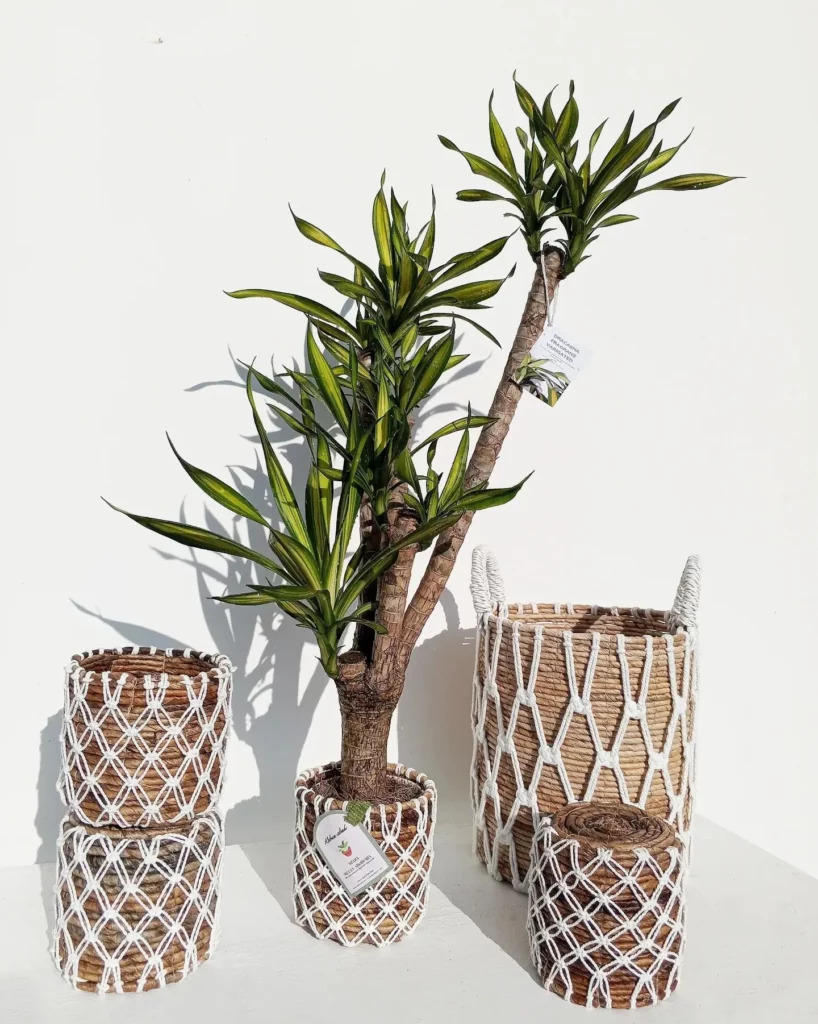


This indoor plant has a distinct personality that adds a pop of color and liveliness to your space. Whether you place it in your living room, office, or bedroom, the Dracaena Lemon Lime will create a vibrant and refreshing ambiance.
Light Requirements for Dracaena Lemon Lime
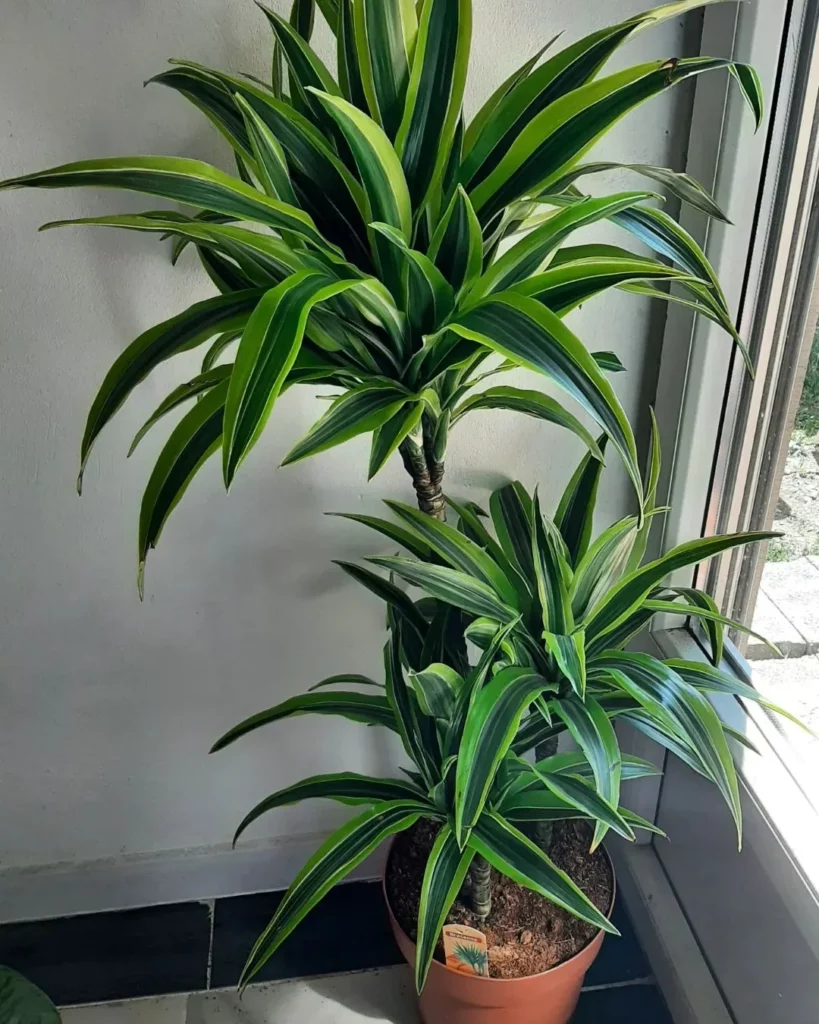
The Dracaena Lemon Lime is a stunning plant that needs the right amount of light to thrive. It is essential to provide it with the ideal light conditions to ensure its vibrant foliage stays healthy and beautiful.
The Dracaena Lemon Lime prefers medium to bright indirect light. Placing it in a location where it can receive enough light without direct sunlight is crucial. Direct sunlight can scorch and pale the leaves, affecting the plant’s overall appearance and health.
If your windows face South or West, consider placing the Dracaena Lemon Lime behind sheer curtains or further away from the window. This will protect it from intense sunlight and provide the perfect balance of light for optimal growth.
Remember to regularly assess the lighting conditions and adjust the plant’s placement accordingly to ensure it continues to receive the right amount of light.
Lighting Tips for Dracaena Lemon Lime:
- Place the plant in an area with medium to bright indirect light.
- Avoid exposing the plant to direct sunlight to prevent leaf damage.
- If your windows face South or West, consider using sheer curtains or placing the plant further away from the window.
- Regularly assess the lighting conditions and adjust the plant’s location as needed.
Watering Tips for Dracaena Lemon Lime


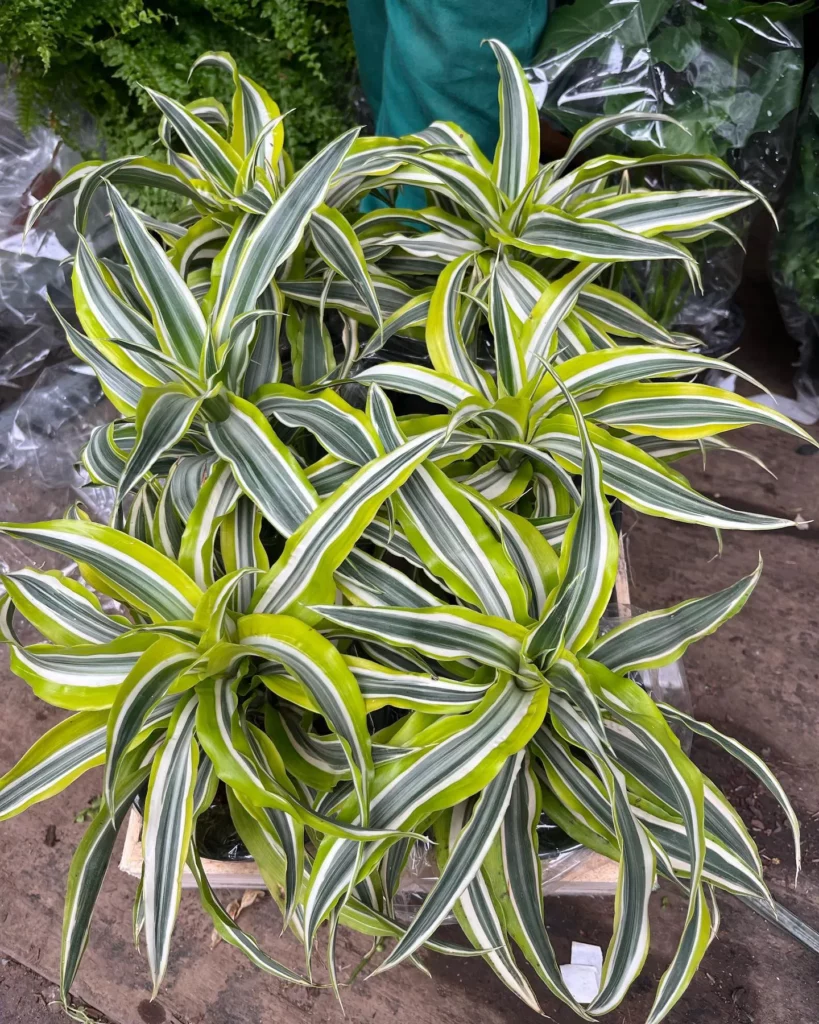
Proper watering is essential for the health and vitality of your Dracaena Lemon Lime plant. To ensure optimal growth, it is important to follow these watering tips:
No products found.
- Check the soil moisture: Before watering your Dracaena Lemon Lime, check the moisture level in the soil. Stick your finger into the top 1″-2″ of soil. If it feels dry to the touch, it’s time to water the plant. If the soil is still moist, wait a few more days before watering again. This plant prefers its soil to dry slightly between waterings.
- Avoid overwatering: Overwatering can be detrimental to the health of your plant and can lead to root rot. It is important to avoid keeping the soil too wet. Make sure the pot has adequate drainage to allow excess water to escape. If the water starts to accumulate in the bottom tray, it’s a sign that you may be overwatering.
- Water thoroughly but infrequently: When watering your Dracaena Lemon Lime, aim to thoroughly saturate the soil. Water until it starts to flow out of the drainage holes. This ensures that the water reaches the roots and promotes healthy growth. However, frequency is key. Allow the soil to dry out slightly between waterings to prevent waterlogged conditions.
| Watering Frequency | Soil Moisture Level |
|---|---|
| Too frequent | Wet soil, waterlogged conditions |
| Proper frequency | Slightly dry soil between waterings |
| Too infrequent | Dry soil, plant stress |
Fertilizing the Dracaena Lemon Lime
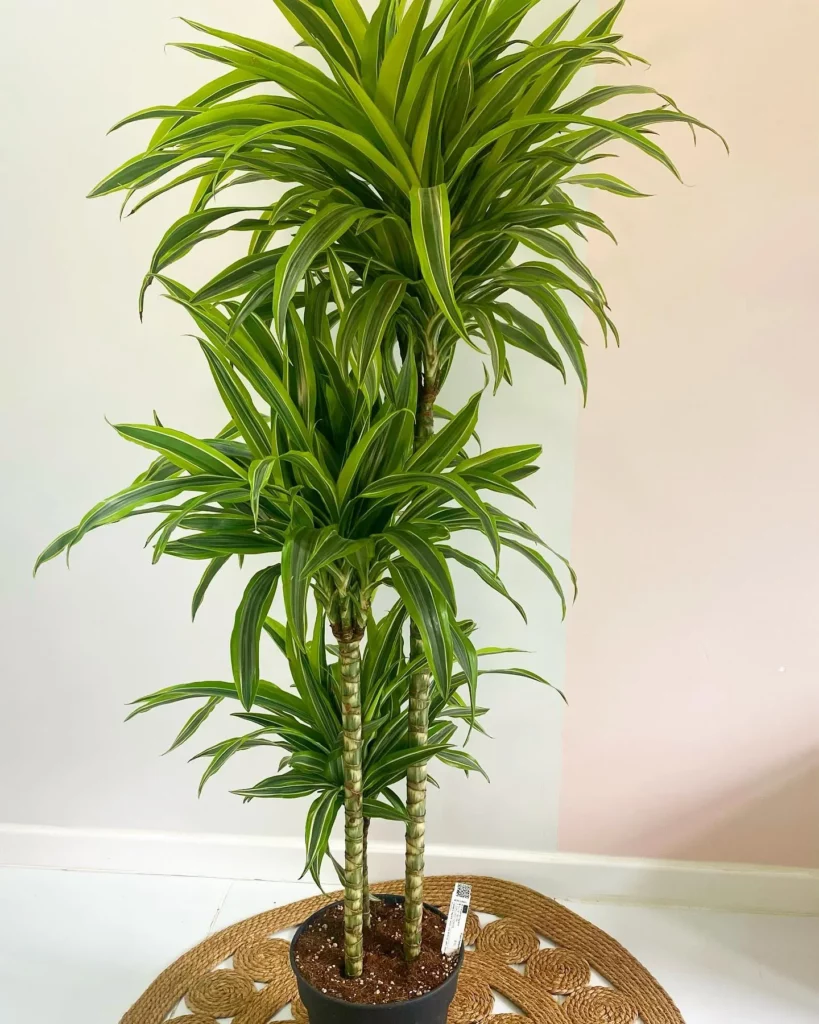
To keep your Dracaena Lemon Lime healthy and thriving, regular fertilization is recommended. Fertilizing provides essential nutrients that promote growth and vibrant foliage. During the spring through fall seasons, monthly fertilization is beneficial for this indoor plant.
When choosing a fertilizer for your Dracaena Lemon Lime, opt for an organic houseplant fertilizer. Organic fertilizers are gentle on the plant and provide a balanced blend of nutrients. Dilute the fertilizer according to the package instructions to prevent overfeeding the plant.
A reputable source, Greenery NYC, suggests using an organic potting mix with slow-release fertilizer in the soil. This slow-release fertilizer provides a continuous supply of nutrients to the plant, reducing the need for additional fertilization for the first 6 months.
Potting and Repotting the Dracaena Lemon Lime
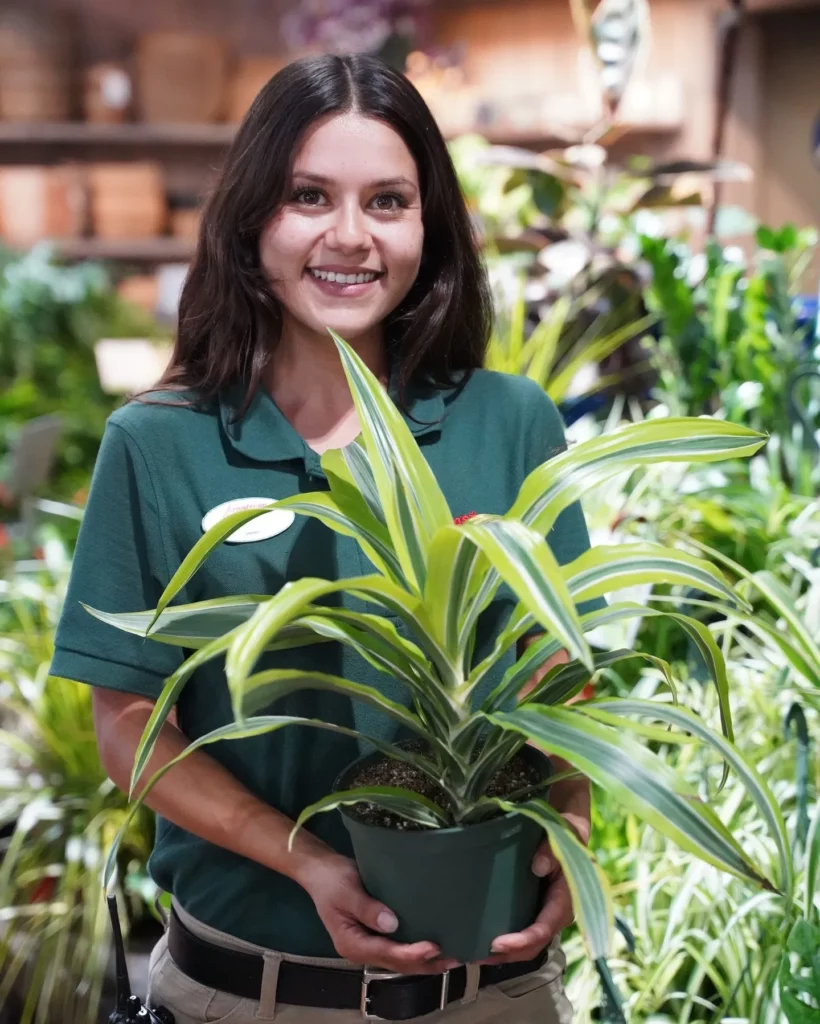

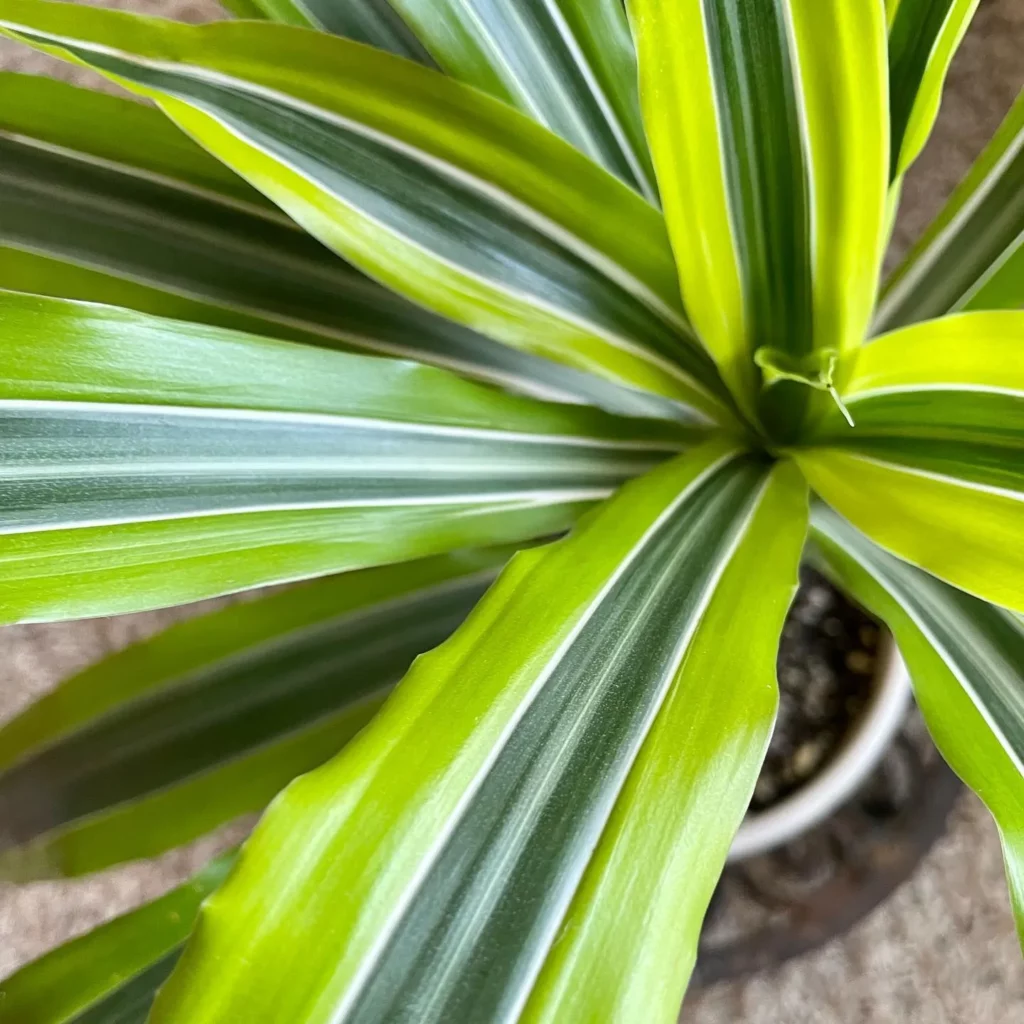
When it comes to potting or repotting your Dracaena Lemon Lime, choosing the right soil mix and pot are essential for its growth and health. The well-being of your plant depends on a well-draining soil that allows excess water to escape, preventing waterlogged soil which can lead to root rot.
Ensure that the pot you select has adequate drainage holes to facilitate water drainage. This helps prevent water from pooling at the bottom, which can suffocate the plant roots. Remember, healthy roots are crucial for the overall vitality of your Dracaena Lemon Lime.
When repotting, carefully transfer the plant to a slightly larger pot in diameter than its current size. This provides room for growth, allowing the roots to spread out. However, avoid choosing a pot that is too large as this can lead to overwatering and hinder root development. The goal is to find the perfect balance between sufficient space for roots and a container that prevents excessive moisture retention.
Here is a quick guide for repotting based on the size of your Dracaena Lemon Lime:
- For smaller desktop plants: Repot every 12-18 months
- For larger floor plants: Repot every 18-24 months
Dracaena Lemon Lime Repotting Timeline
| Plant Size | Repotting Frequency |
|---|---|
| Smaller Desktop Plants | Every 12-18 months |
| Larger Floor Plants | Every 18-24 months |
Now that you have the knowledge to pot and repot your Dracaena Lemon Lime properly, let’s move on to the exciting topic of propagation in the next section.
Propagation of the Dracaena Lemon Lime
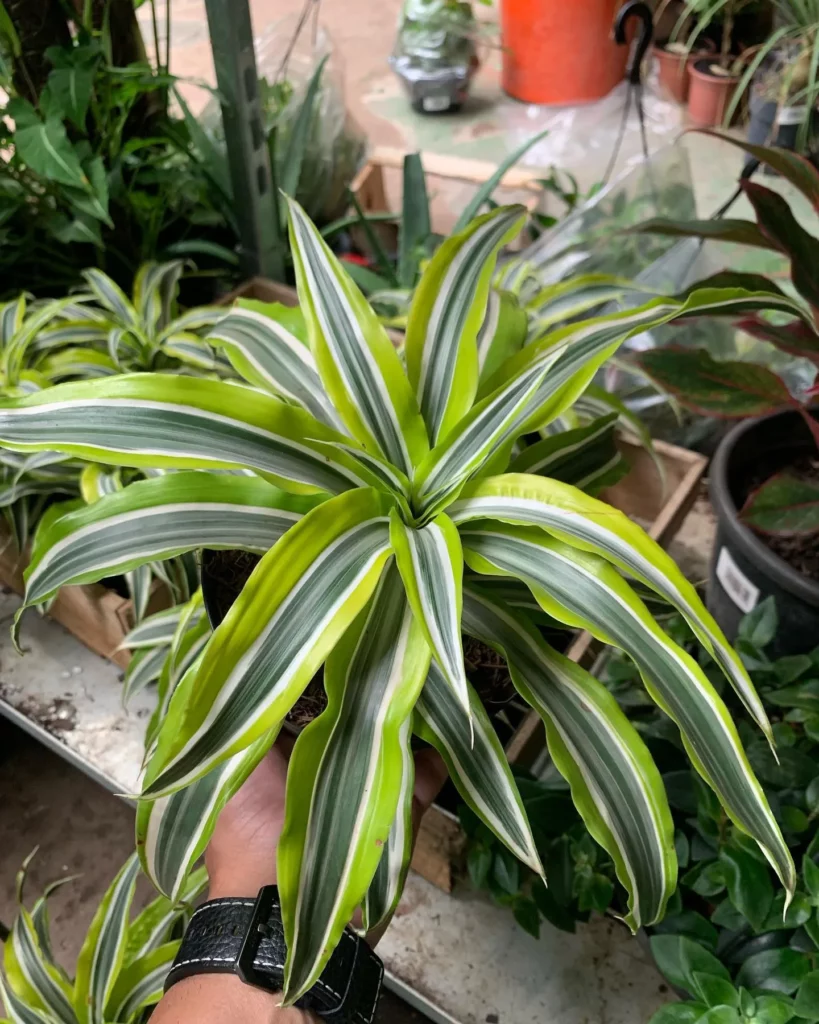
The Dracaena Lemon Lime can be easily propagated through stem cuttings, allowing you to expand your collection or share the beauty of this plant with others. Here’s a simple step-by-step guide to successfully propagate your Dracaena Lemon Lime:
- Select a healthy stem from the Dracaena Lemon Lime plant that is around 4-6 inches long. Make sure it has several leaves attached.
- Using a clean and sharp pair of garden shears or a knife, cut the stem just below a leaf node, where a leaf is attached to the stem.
- Fill a glass or container with clean water and place the cut end of the stem into the water. Make sure that the bottom part of the stem is fully submerged.
- Allow the stem cutting to sit in water for a few hours to promote the growth of roots.
- After a few hours, remove the stem cutting from the water and dip the cut end into a rooting hormone. This hormone will help stimulate root growth.
- Prepare a pot with well-draining and moist soil mix.
- Make a small hole in the soil mix with your finger and gently place the stem cutting into the hole.
- Press the soil gently around the cutting to provide stability.
- Place the potted stem cutting in a bright location with indirect sunlight. Avoid placing it in direct sunlight as it may cause the cutting to wither or burn.
- Keep the soil consistently moist but not soggy. Check the moisture level by inserting your finger into the soil. If the top inch of the soil feels dry, it’s time to water.
- After 6-8 weeks, roots will begin to establish, and you can gently tug on the stem to check for resistance, indicating successful rooting.
- Once the roots have developed sufficiently, you can transfer the rooted cutting into its own container filled with potting soil.
Avoid Overwatering
During the rooting process, it’s important to strike a balance with watering. Overwatering can lead to rotting of the stem cutting, while underwatering can hinder root development. Monitor the moisture level of the soil consistently and adjust your watering accordingly.
Growth and Development of the Dracaena Lemon Lime
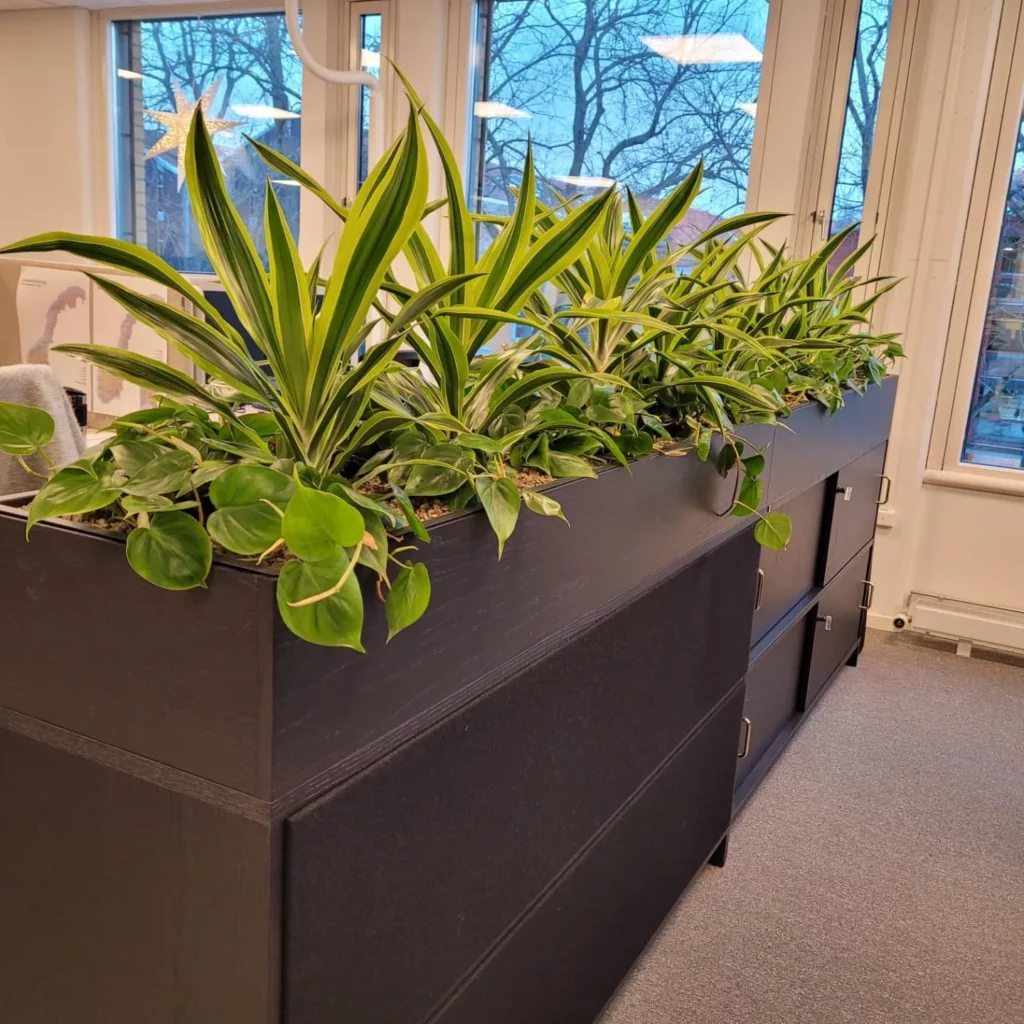
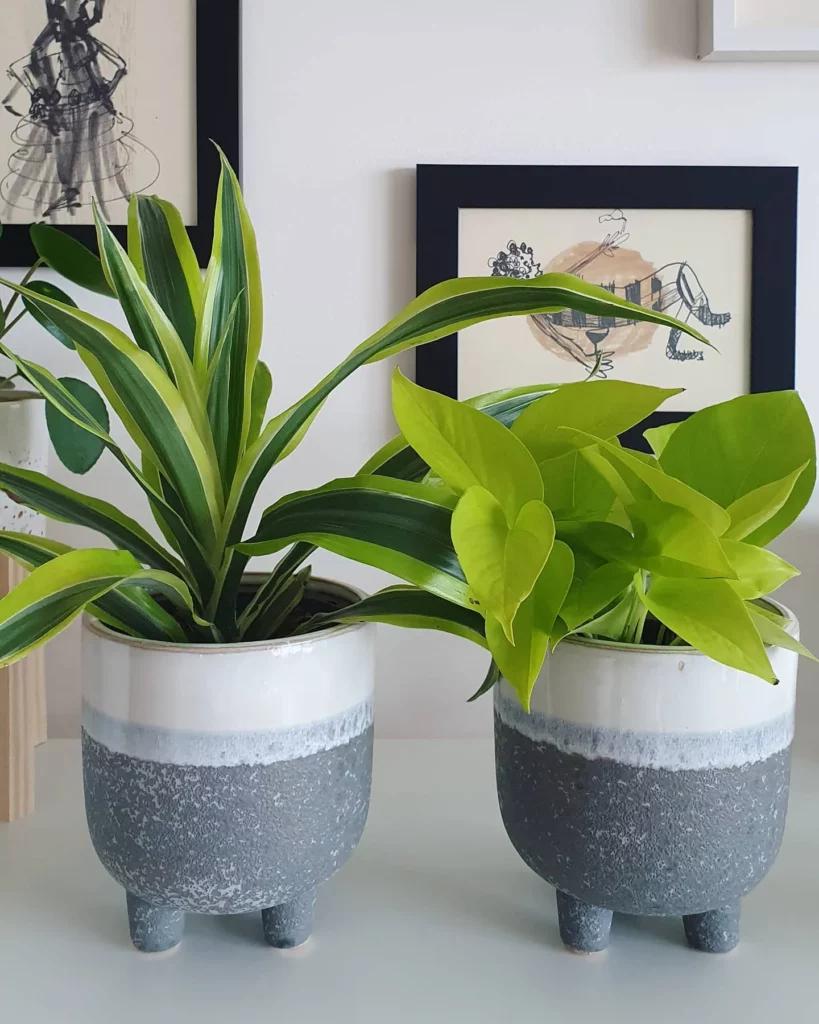

The Dracaena Lemon Lime is a slow-growing plant that can add a touch of elegance to your indoor space. With proper care, this plant has the potential to reach heights of 5-7 feet, creating a stunning focal point in any room.
Size Control through Pruning
To ensure your Dracaena Lemon Lime remains at a manageable size, regular pruning is essential. Pruning not only helps control the height and shape of the plant but also promotes bushier growth, enhancing its overall appearance.
When pruning your Dracaena Lemon Lime, start by removing any brown or damaged leaves. Use clean and sharp pruning shears to make clean cuts at a slight angle, just above a node or joint. This technique encourages new growth and prevents the plant from becoming leggy.
It’s important to note that pruning should be done sparingly and with caution. Avoid excessive pruning, as it can create stress for the plant and hinder its growth. Aim to strike a balance between size control and maintaining the health of your Dracaena Lemon Lime.
No products found.
Trimming Techniques
When trimming your Dracaena Lemon Lime, it’s best to focus on specific areas to achieve the desired shape and size:
- Remove any yellow or discolored leaves to maintain the plant’s vibrant appearance.
- Trim branches that are growing too long or extending beyond the desired height.
- Trim back any branches that are crossing or rubbing against each other, as they can lead to damage or hinder growth.
Pests and Diseases of the Dracaena Lemon Lime

The Dracaena Lemon Lime, like any other plant, is prone to certain pests and diseases that can affect its health and appearance. Regular inspection and prompt action are key to keeping your Dracaena Lemon Lime thriving. Here are some common pests and diseases to look out for:
- Mealybugs: These small, white, cottony insects can quickly spread and infest your plant. They feed on the sap, causing yellowing leaves and stunted growth. To get rid of mealybugs, wipe them off with cotton swabs dipped in rubbing alcohol or use insecticidal soap. Repeat the treatment every week until the infestation is gone.
- Scales: Scales are small, oval-shaped pests that form hard, protective shells on the leaves and stems. They suck the sap from the plant, causing yellowing and wilting. To remove scales, scrape them off with a toothbrush or soft cloth dipped in soapy water. Apply neem oil or insecticidal soap to kill any remaining pests.
- Aphids: These tiny insects can rapidly reproduce and cover your Dracaena Lemon Lime in a sticky residue called honeydew. They deform new growth and can introduce viruses to the plant. Use a strong stream of water to dislodge aphids from the leaves. Alternatively, apply insecticidal soap or neem oil to eliminate them.
- Spider Mites: Spider mites are barely visible to the naked eye and usually appear as specks on the undersides of leaves. They suck the sap, causing yellowing and webbing on the affected parts. To control spider mites, regularly mist the leaves to increase humidity, and use insecticidal soap or neem oil to kill them.
No products found.
Standard Planter Instructions for Dracaena Lemon Lime

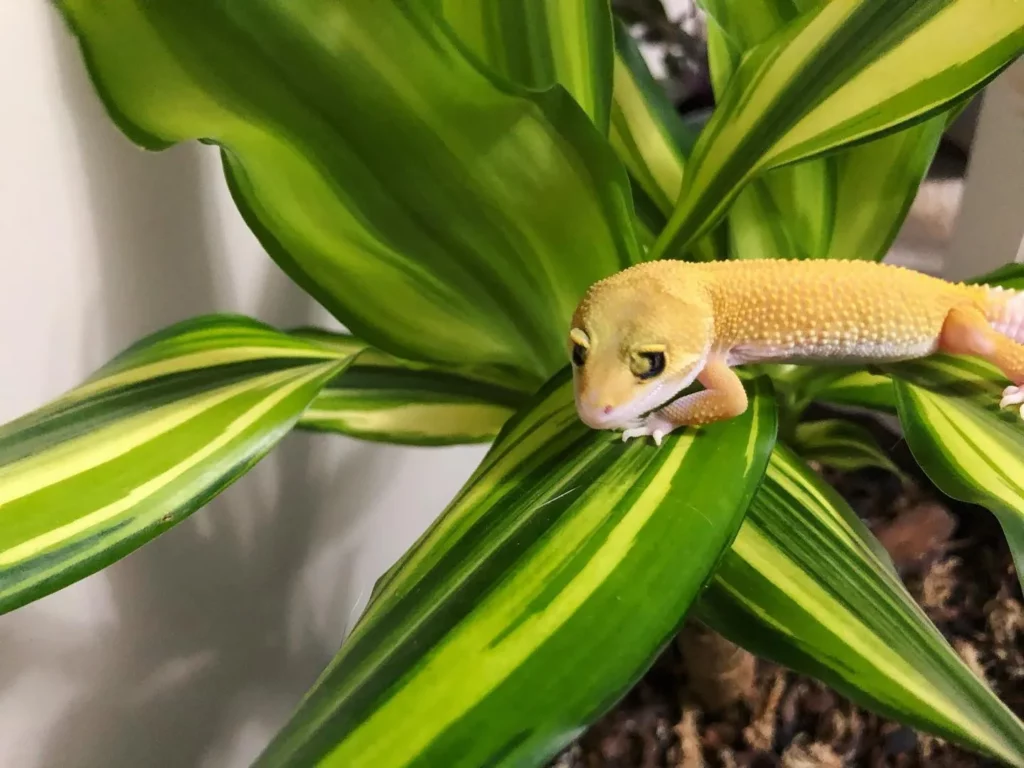
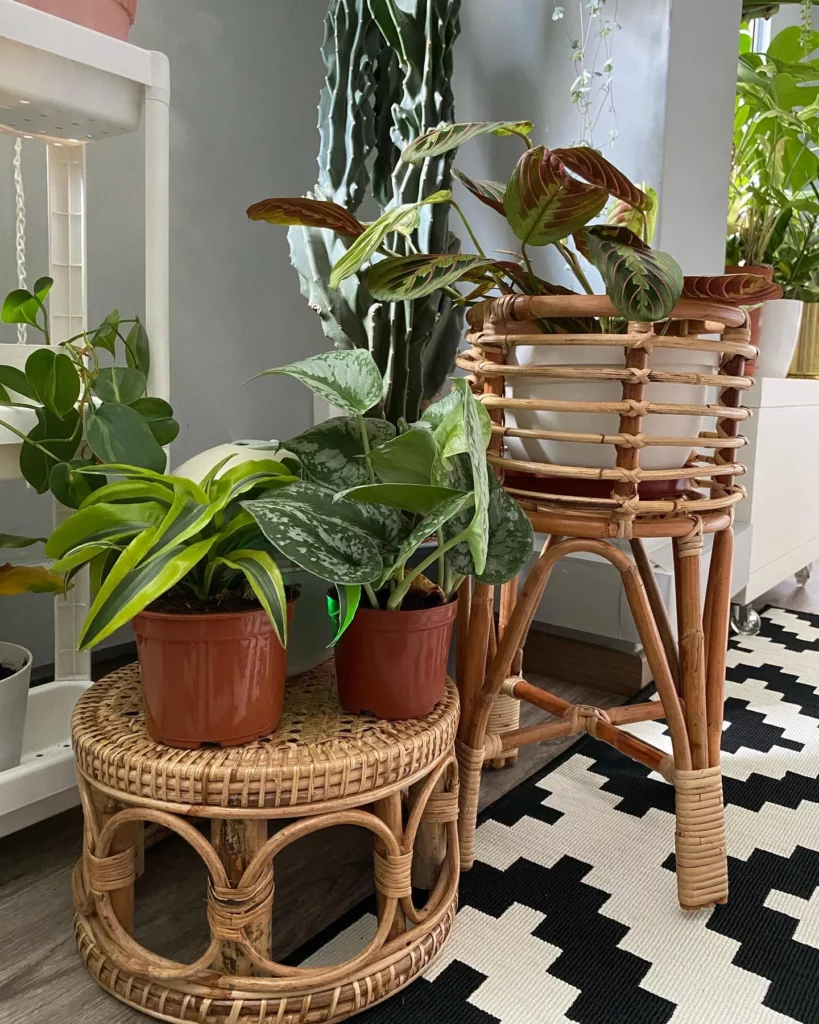
If you’re planning to use a standard planter for your Dracaena Lemon Lime, here are some important instructions to keep in mind:
- Choose a pot with drainage holes: To prevent waterlogging and ensure proper drainage, select a planter that has drainage holes at the bottom.
- Watering: When watering your Dracaena Lemon Lime, pour water until it begins to flow out of the drainage holes and into the catch tray. This helps to avoid overwatering and ensures that excess water can easily escape from the pot.
- Potting mix: Use a well-draining indoor potting mix that contains perlite. This will help to improve drainage and prevent the soil from becoming too compacted.
- Assess watering needs: Regularly assess the watering needs of your plant by checking the moisture level of the soil. Stick your finger about an inch into the soil. If it feels dry, it’s time to water. If it’s still moist, wait a few more days before watering again.
Self Watering Container Instructions for Dracaena Lemon Lime

If you’re using a self-watering container to care for your Dracaena Lemon Lime, it’s important to follow the proper instructions for watering. These containers are designed to provide a consistent water supply to the plant, ensuring it receives the right amount of moisture.
To start, give the topsoil of the plant a thorough watering to allow the roots to establish themselves. This initial watering ensures the plant has enough moisture to begin its growth journey in the self-watering container.
After a few weeks, you can start testing the water reservoir of the container. Fill it up until the red indicator reaches the maximum line. This indicates that the reservoir is full and ready to provide water to the plant as needed.
As the plant utilizes the water in the reservoir, it will eventually dry out. Allow for a drying out period before refilling the reservoir. Once the drying out period is over, refill the reservoir until the red indicator reaches the maximum line again. This ensures the proper functioning of the self-watering system, providing your Dracaena Lemon Lime with a constant supply of water.
It’s worth mentioning that top watering should be avoided when using a self-watering container. The roots of the Dracaena Lemon Lime will absorb moisture directly from the reservoir, so excessive top watering could drown the plant and hinder its growth.
Incorporating a self-watering container into your plant care routine can simplify the watering process and provide a balanced and consistent moisture level, promoting the health and vitality of your Dracaena Lemon Lime.
Common Issues and Troubleshooting for Dracaena Lemon Lime
If you notice that the tips of your Dracaena Lemon Lime’s leaves are turning brown, don’t panic. This is a common issue that can be easily addressed. Brown tips are usually a sign of overwatering, so make sure to check the moisture level of the soil before watering. Allow the top inch of soil to dry out before watering again and ensure that the pot has proper drainage to prevent water from sitting in the bottom.
Discoloration of the leaves can also occur due to various factors. One common reason is the presence of chlorine in the water. To prevent this, use distilled or filtered water when watering your Dracaena Lemon Lime. Another possible cause of discoloration is direct sunlight. While this plant thrives in bright light, direct sunlight can cause the leaves to become pale or scorched. Place your plant in a location with bright, indirect light for optimal growth.
Proper plant care is crucial for preventing these issues and ensuring the health of your Dracaena Lemon Lime. Regular maintenance such as pruning dead or damaged leaves, dusting the leaves to remove dust build-up, and monitoring for pests is essential. Pests like mealybugs, scales, aphids, and spider mites can also cause discoloration and damage to the leaves. If you notice any signs of infestation, take immediate action to treat the problem and prevent further spread.
By following these troubleshooting tips and providing proper care, you can keep your Dracaena Lemon Lime looking healthy and vibrant. Remember to adjust your watering routine, use distilled water, and maintain a suitable environment for your plant. With a little attention and care, your Dracaena Lemon Lime will thrive and continue to brighten up your space.
FAQ
How tall does the Dracaena Lemon Lime plant grow?
The Dracaena Lemon Lime can reach heights of 5-7 feet indoors with proper care.
How often should I water the Dracaena Lemon Lime?
The Dracaena Lemon Lime prefers its soil to dry slightly between waterings. Check the top 1″-2″ of soil and water when it is dry. Avoid overwatering to prevent root rot.
How often should I fertilize the Dracaena Lemon Lime?
The Dracaena Lemon Lime benefits from monthly fertilization during the spring through fall seasons. Use an organic houseplant fertilizer and dilute according to package instructions.
How do I pot or repot the Dracaena Lemon Lime?
When potting or repotting the Dracaena Lemon Lime, use a well-draining soil mix and a pot with drainage holes. Repot every 12-18 months for smaller plants and every 18-24 months for larger plants.
How do I propagate the Dracaena Lemon Lime?
The Dracaena Lemon Lime can be propagated through stem cuttings. Take a 4-6 inch cutting with leaves, dip in water and then rooting hormone. Plant in a pot with moist soil and place in indirect sunlight. Roots will develop in 6-8 weeks.
How do I prune the Dracaena Lemon Lime?
Regular pruning helps control the size and shape of the Dracaena Lemon Lime. Trim off brown or damaged leaves and prune to encourage bushier growth and prevent leggy growth.
What pests and diseases should I watch out for with the Dracaena Lemon Lime?
The Dracaena Lemon Lime is susceptible to mealybugs, scales, aphids, and spider mites. Regularly inspect the plant for signs of infestation or disease and take immediate action to treat and prevent further spread.
How should I water the Dracaena Lemon Lime in a standard planter?
Choose a pot with drainage holes and water until it begins to come out of the bottom into the catch tray. Use a well-draining indoor potting mix with perlite for optimal drainage.
How do I water the Dracaena Lemon Lime in a self-watering container?
Follow the instructions for the self-watering container. Initially water the topsoil to establish the roots, then fill the water reservoir until the red indicator reaches the maximum line. Refill the reservoir after a drying out period.
What are common issues with the Dracaena Lemon Lime and how can I resolve them?
Common issues include browning leaf tips and discoloration, which can be caused by overwatering or other factors. Proper watering, using distilled water, and addressing environmental factors can help resolve these issues. Regular maintenance and care are essential for the plant’s health.





